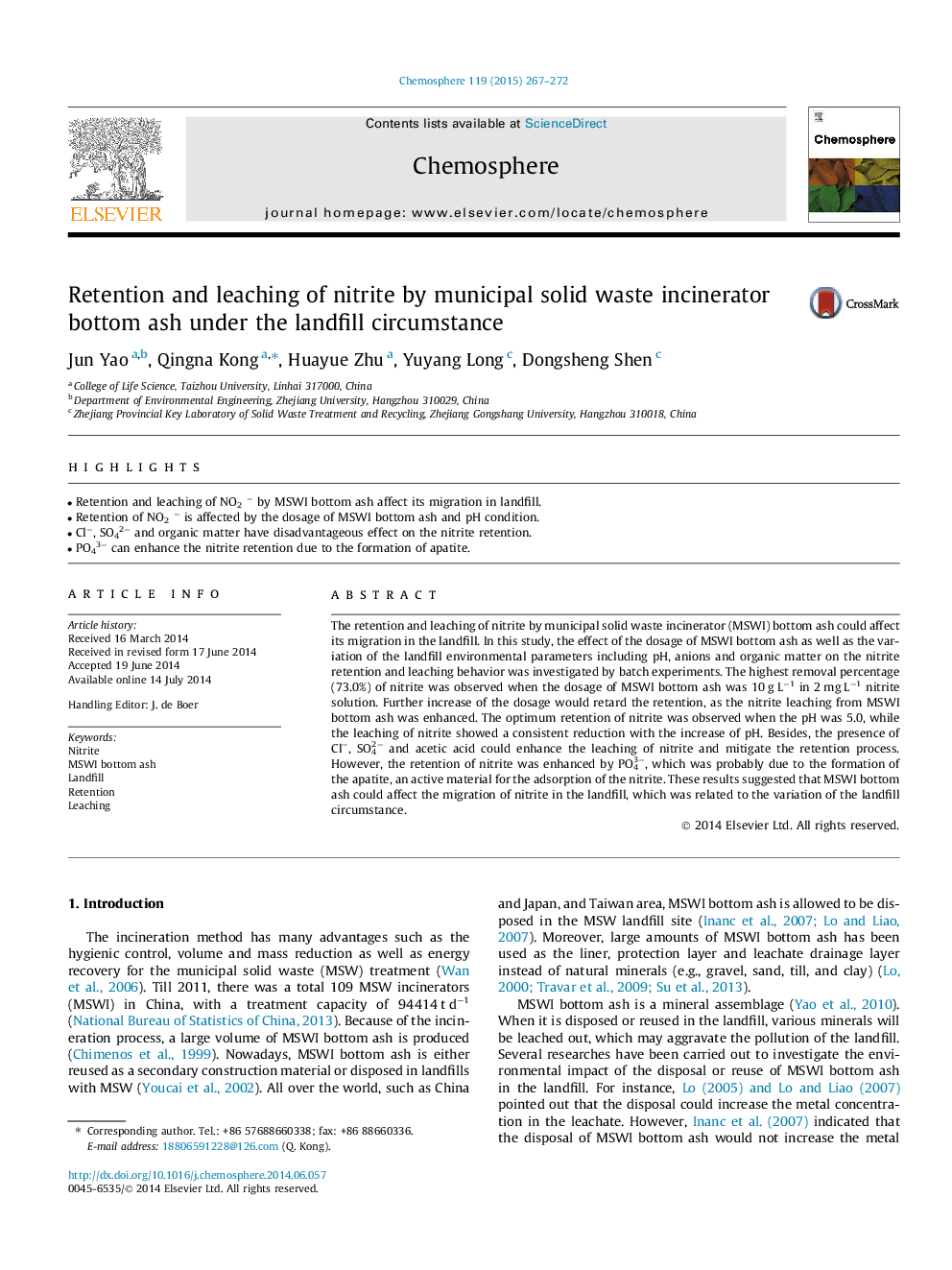| Article ID | Journal | Published Year | Pages | File Type |
|---|---|---|---|---|
| 4408629 | Chemosphere | 2015 | 6 Pages |
•Retention and leaching of NO2− by MSWI bottom ash affect its migration in landfill.•Retention of NO2− is affected by the dosage of MSWI bottom ash and pH condition.•Cl−, SO42− and organic matter have disadvantageous effect on the nitrite retention.•PO43− can enhance the nitrite retention due to the formation of apatite.
The retention and leaching of nitrite by municipal solid waste incinerator (MSWI) bottom ash could affect its migration in the landfill. In this study, the effect of the dosage of MSWI bottom ash as well as the variation of the landfill environmental parameters including pH, anions and organic matter on the nitrite retention and leaching behavior was investigated by batch experiments. The highest removal percentage (73.0%) of nitrite was observed when the dosage of MSWI bottom ash was 10 g L−1 in 2 mg L−1 nitrite solution. Further increase of the dosage would retard the retention, as the nitrite leaching from MSWI bottom ash was enhanced. The optimum retention of nitrite was observed when the pH was 5.0, while the leaching of nitrite showed a consistent reduction with the increase of pH. Besides, the presence of Cl−, SO42− and acetic acid could enhance the leaching of nitrite and mitigate the retention process. However, the retention of nitrite was enhanced by PO43−, which was probably due to the formation of the apatite, an active material for the adsorption of the nitrite. These results suggested that MSWI bottom ash could affect the migration of nitrite in the landfill, which was related to the variation of the landfill circumstance.
